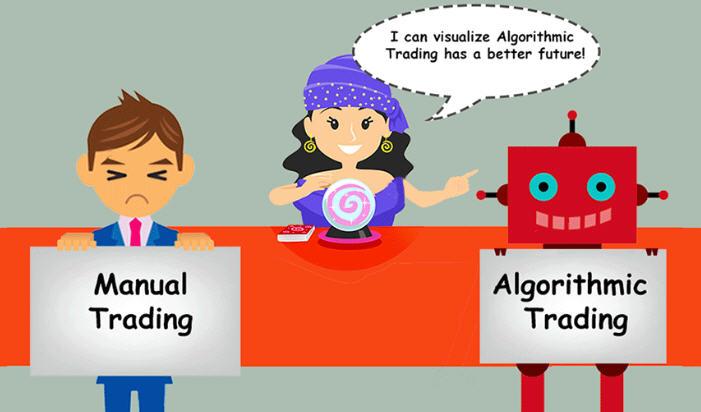Algo Trading vs Manual Trading- Pros and Cons Compared
Trading strategies differ according to goals, risk appetite, and decision-making style. Algo trading and manual trading are two standard methods in the financial markets. Both have different traits and are aimed at different classes of traders.
Algo Trading Meaning
Trading occurs through computer programs and algorithms that are called algo trading, whereby trading instructions are fed by systems according to predetermined criteria, such as price, volume, timing, and any other mathematical model. Under this setup, trade execution is entirely automated once the algorithms receive trading instructions. This reduces the need for human intervention in trade execution.
Manual Trading Meaning
Manual trading is when decisions to buy or sell are made by personal analysis of charts, news, and market trend data. Orders are then entered into the trading system by the trader concerned. Such actions depend on the trader’s experience, interpretation, and grasp of market conditions.
Pros and Cons of Algo Trading
Pros:
Fast and Efficient: The algorithm can study massive amounts of data and affect trades within the shortest time possible. This maximizes the time when an order is placed after it receives trigger eligibility.
No More Emotional Business: Since trades are executed automatically through logical reasoning, human beings do not interfere. Decisions are made strictly based on data and pre-defined rules.
Backtest: Back-testing allows trading through algorithms for testing different strategies on historical data before applying them in a live market environment, thereby giving the strategy indications of possible effectiveness and possible flaws.
Consistent Performance: Algorithms operate consistently for given trading parameters and will not get tired or mentally disturbed.
Cons:
Technological Risks: Depending on the technology, algo trading would suffer from loss on account of any technical glitch be it either in software or hardware.
Over-Optimization Risk: A trader can optimize performance on a backtest until it appears perfect but cannot adapt in a real market fluctuating back and forth on changing conditions.
Monitoring Requirements: Though automated, these trades need constant monitoring to ensure that they function properly, with intervening action available if something goes awry.
The Advantages and Disadvantages of Manual Trading
Advantages:
Human Judgment: Traders may apply discretion and experience in the market to take actions that may not be detected by the algorithms. The trader may gauge market sentiment and look to respond to the sudden onset of various events.
Flexibility: The trader may adapt his strategy during the session when conditions require it. Traders are not confined to what a computer program encodes in logic.
Easier Setup: Manual trading demands less technical infrastructure. It can be executed on standard live trading accounts and does not need any programming knowledge.
Quick Act: When anything is out of the ordinary, it allows the manual trader flexibility in assessing the situation and judgment.
Disadvantages:
Emotional Context: Emotional states such as fear, greed, or panic can affect the trader’s decision-making abilities, leading to highly inconsistent strategies.
Slow Execution: Manual execution is, by whichever definition, considerably slower than an automated system. This may prevent a trader from taking action on a new opportunity or getting a reasonable price.
Fatigue and Mistakes: Human traders can be fatigued during long trades and make mistakes or overlook important market levels.
Processing of Limited Data: Humans are not capable of the same sort of evaluation of large data sets at the speed of a computer program, further impairing their ability to evaluate multiple variables in real-time.
Comparison- Pros and Cons
Indeed, algo trading and manual trading have their pros and cons. The trader’s preferences, goals, and resources determine which is highly effective for them. Balanced in understanding through this comparison of algo trading vs manual trading- pros and cons in comparison. While algo trading is focused more on the automation of speed, manual trading values intuition and flexibility. For example, a trader might analyze his needs with a given market condition to decide which strategy or combination of strategies is useful for their purposes.
Traders might use any one of the two types of trading depending on their style of operation in the markets, their comfort level with technology, and their method of engagement. The pros and cons of algorithmic trading and manual trading offer a base for traders to explore which method is closer to their mindset and resources.

